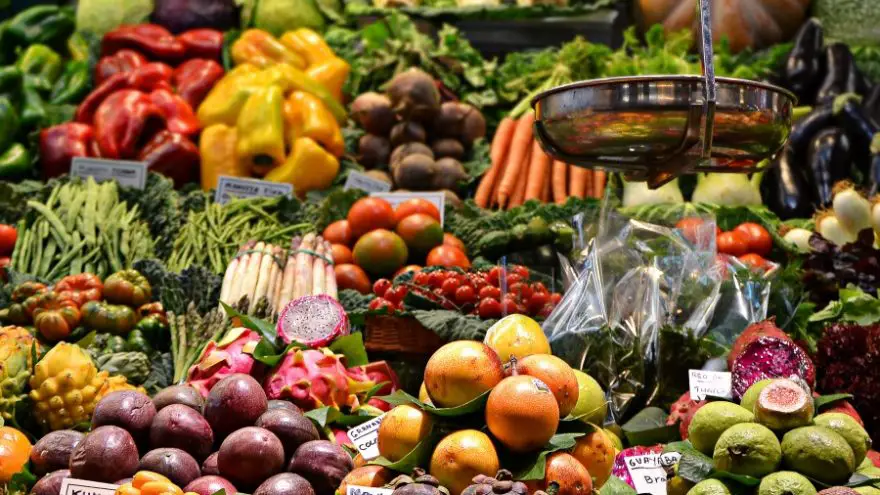How to Encourage your Child to Eat More Vegetables

There are so many kids who squawk at eating certain vegetables. Parents start to worry because they know that vegetables are a rich source for many nutrients, vitamins, and minerals. Most parents should start their children on vegetables before fruits so they get to know the taste of vegetables before the taste of natural sugar. Doctors recommend that when children start to eat food to mix vegetables in with their cereal. Sweet potatoes are a good one to start with. In addition, now they have baby bullets out for parents to make veggie smoothies for their kids so they could try this and put this into a nice sippy cup with a straw. Mix a banana into the smoothie as well so your child will enjoy the taste of the smoothie and still get their daily dose of vegetables. Parents are on the run because of work and other activities but introducing fresh vegetables is always better than canned vegetables. The taste is much more enjoyable for a child’s plate.
Check and see what the recommended dose is from the USDA for the age of your child. They do suggest one to three cups of colorful vegetables daily and for 2 and 3-year-olds, one cup. Most kids hate the color of green vegetables so you have to be creative and start mixing vegetables into their foods. You can always try adding zucchini noodles into a pasta mix, try cauliflower as a pizza crust, or rice and even mashed potatoes. Add some shredded carrots and spinach to the pizza and sauce and make fresh veggie fries.
Keep introducing new vegetables and if they don’t go over too well, try re-introducing them at a later date. You’re the parents so it’s hard to give up your control during mealtimes but it’s your responsibility to feed your kids and their responsibility to eat what is on their plate. Keep the control because, in the long run, your kids will learn to enjoy a variety of foods instead of giving in to a picky eater who only will eat hot dogs.
You can change the way vegetables look and either freeze dry them or make them crunchy by using an oven for baking so your kids don’t have to deal with the grease from frying. Appearance is also important because if something looks fun, kids are more apt to eat it.
There are also many ways to make veggies, by cooking, steaming, sauteed, roasting, warm, cold, frozen, with dip and cut into shapes. Kids can also choose veggie toppings for their pizza and tacos and put them in bright colored bowls. Kids also enjoy dipping vegetables into flavored dips, guacamole, sauces, hummus, the ranch is a favorite, fruit salsa and nut butter.
Kids love tacos and using beans and roasted vegetables is a good way to try something new. Add vegetables to mac and cheese and on the top of your family pizza. You can always try letting them have a hand at helping you with the garden so they understand the concept of where vegetables come from. This helps because they start as a seed and the outcome is for them to end up on your table for lunch and dinner and snacks. If kids learn where food comes from and helps with the process, this helps them to become more connected to the vegetables they are eating and they have more appreciation of the vegetables if they are the ones who helped you grow them. If they don’t like a certain vegetable, let them tell you why because you are not going to get your kids to eat every vegetable on the planet.
 Let your kids help you with cooking as well. If they have a say in how they like their vegetables made and what they like to eat, they are more adept at wanting to eat the vegetables. Kids are interested in creating and more interested if they get to eat their own creations so if your child asks you to decorate your plate, let them. You would be surprised what they learn watching cooking on youtube videos. Some kids can make a plate of food look like a work of art when they mix different colored vegetables with dips and cheese.
Let your kids help you with cooking as well. If they have a say in how they like their vegetables made and what they like to eat, they are more adept at wanting to eat the vegetables. Kids are interested in creating and more interested if they get to eat their own creations so if your child asks you to decorate your plate, let them. You would be surprised what they learn watching cooking on youtube videos. Some kids can make a plate of food look like a work of art when they mix different colored vegetables with dips and cheese.
Here are some tips for parents, give your kids more fruits and vegetables as snacks. Make sure they are washed and in the refrigerator where the kids can grab them. Offer salads with meals more frequently. You can buy the prewashed bags at the grocery store and teach your kids how to use the right amount of salad dressing.
Try more vegetarian recipes for spaghetti, lasagna, chili, and other foods. Make sure you include a leafy yellow or green veggie for vitamin A like spinach, broccoli, greens, and carrots daily. Also add one fruit that is high in vitamin C like oranges, berries, melons, tomato, and broccoli once a day.
When it comes to vegetables, make sure your child is eating the recommended amount of vegetables daily from the USDA and if your child is active, they will need more nutrients. In addition, make sure you are a good role model and eat more vegetables in front of your kids because they love to mimic mom and dad.
 Shop for fresh fruits and vegetables first before you shop for anything else. Make sure you stock up so you always have fresh veggies on hand. Most grocery stores have products in the front as you enter the store so people are aware they should stock up on these foods for healthy living.
Shop for fresh fruits and vegetables first before you shop for anything else. Make sure you stock up so you always have fresh veggies on hand. Most grocery stores have products in the front as you enter the store so people are aware they should stock up on these foods for healthy living.
Stay away from high-calorie foods like chips, cookies, candy, soda and ice cream. Keep your kids away from the aisles with the junk food in them because out of sight, out of mind. Make sure you give your kids 100% fruit or vegetable juice without any added sugars. Always remember to eat as a family as much as possible. Research has shown that kids eat more healthy foods like vegetables and fruits when they eat with their family. If you are able to cook a healthy meal or have healthy leftovers. This will keep everyone away from the junk food TV dinners.







